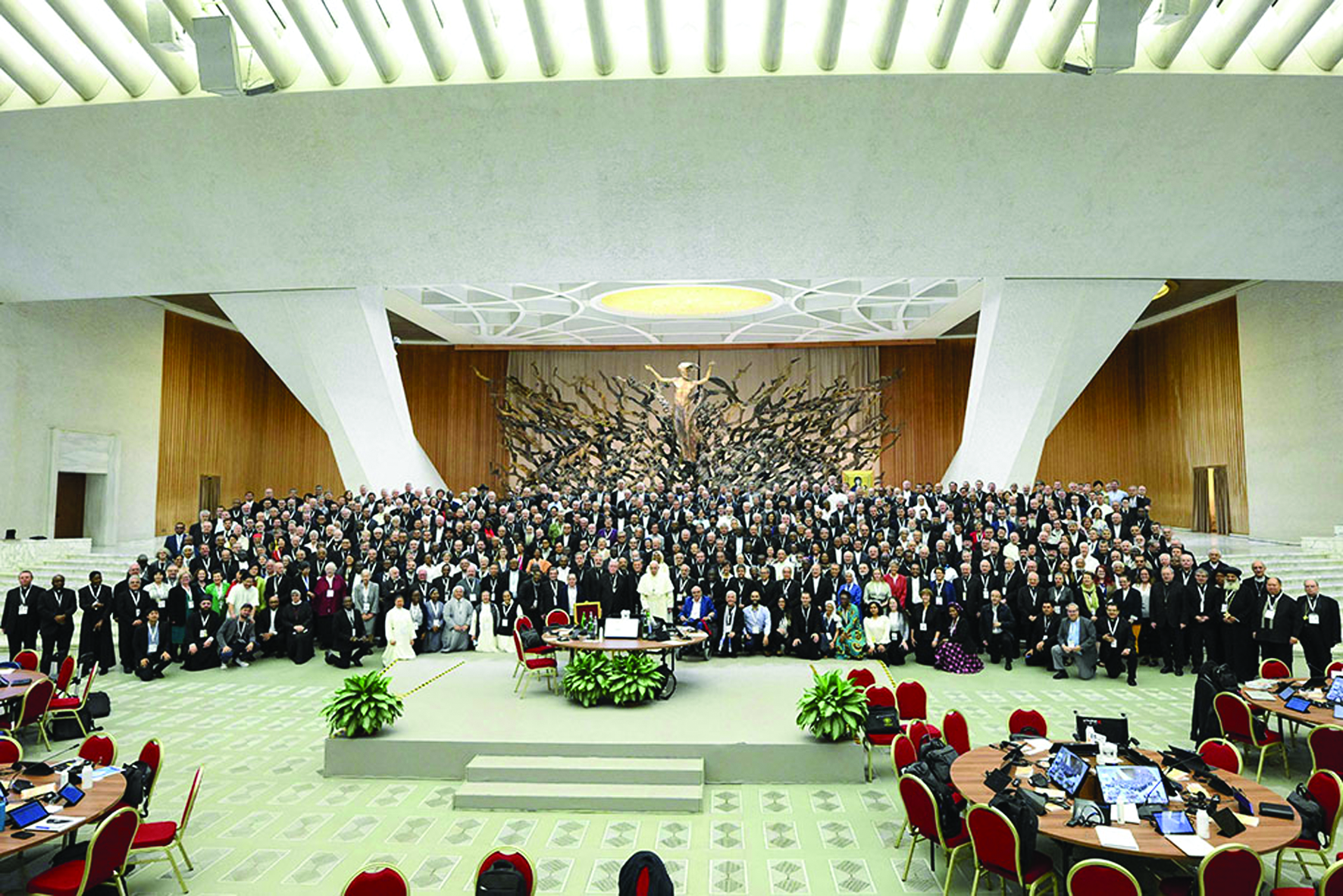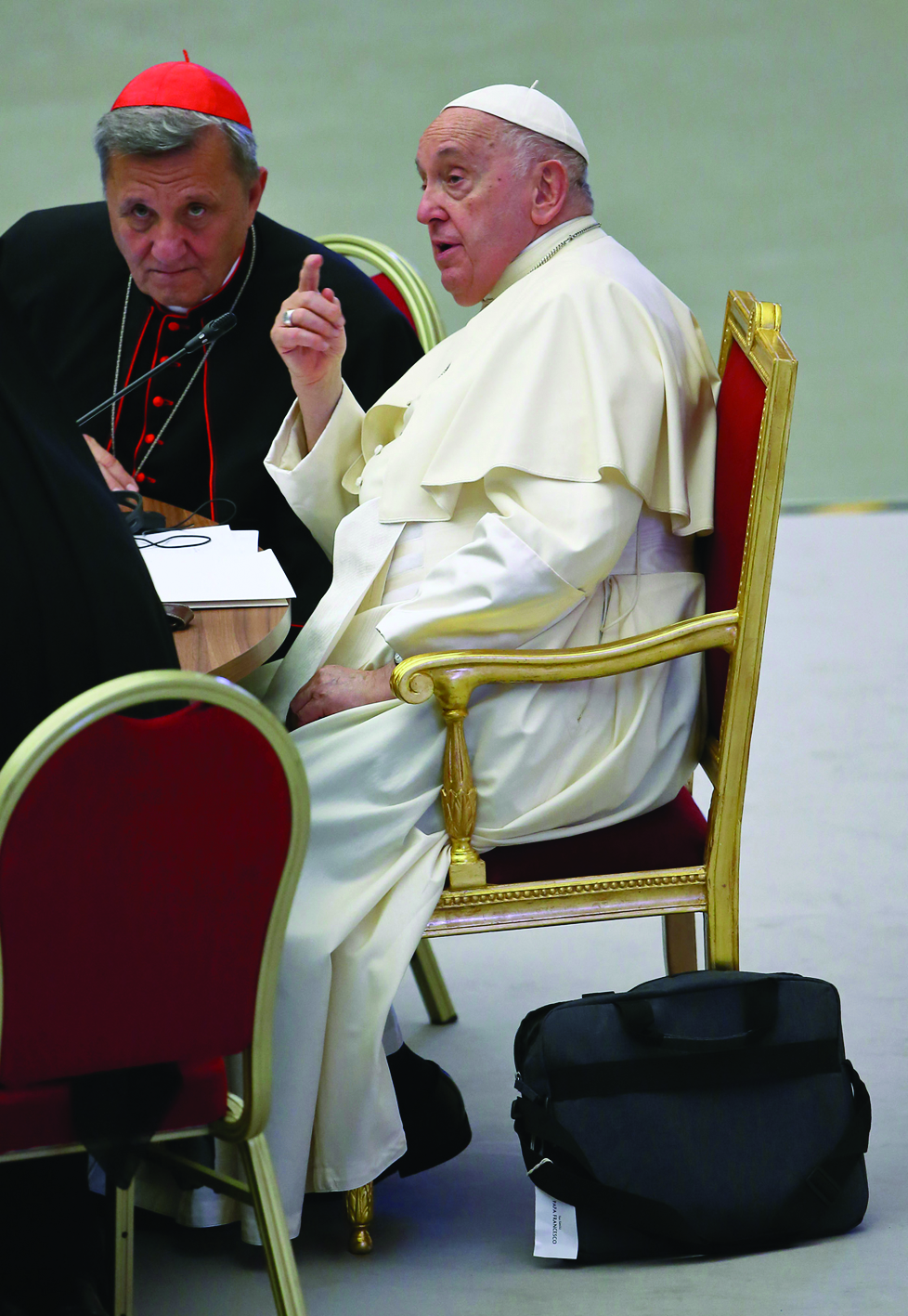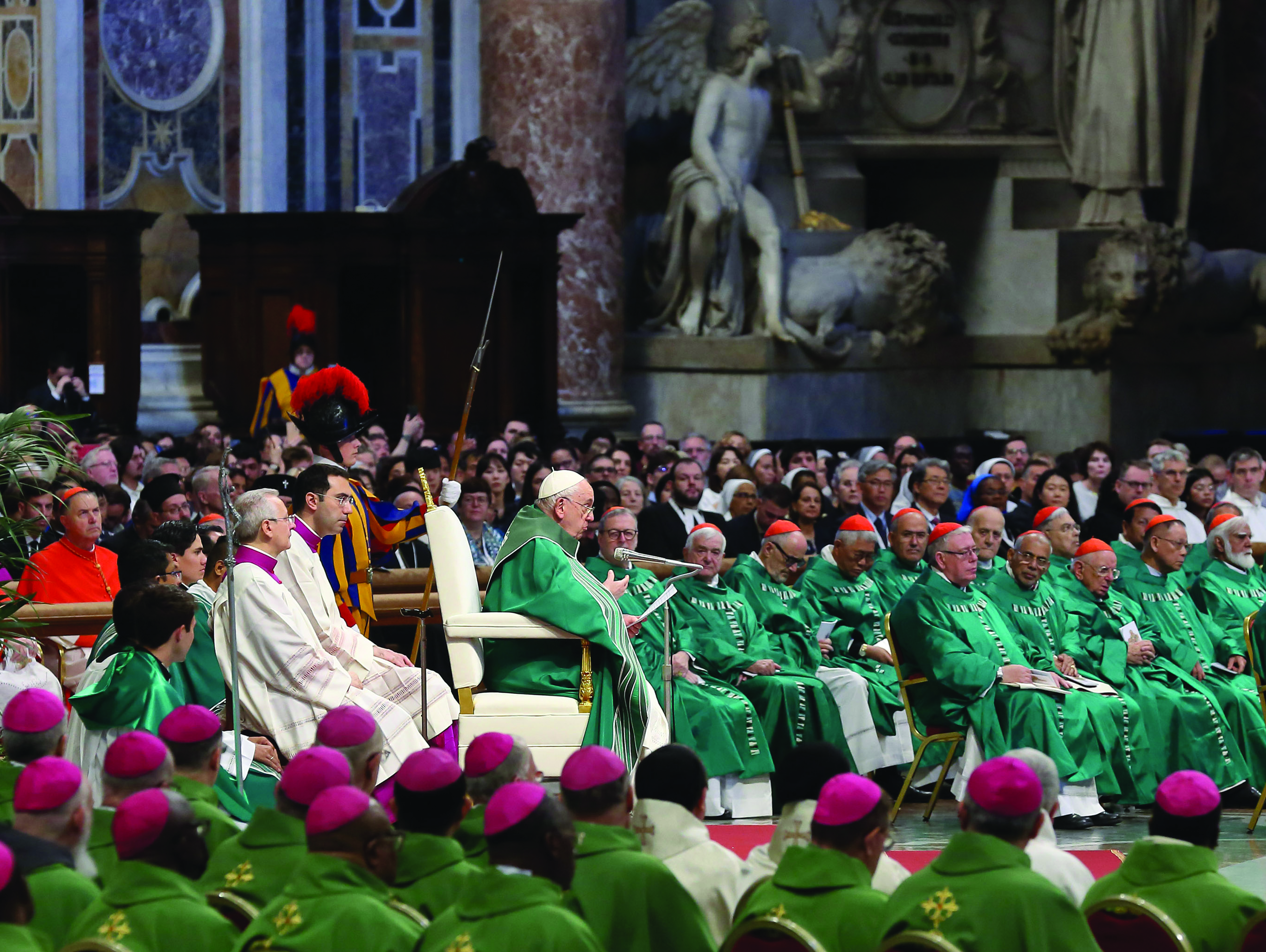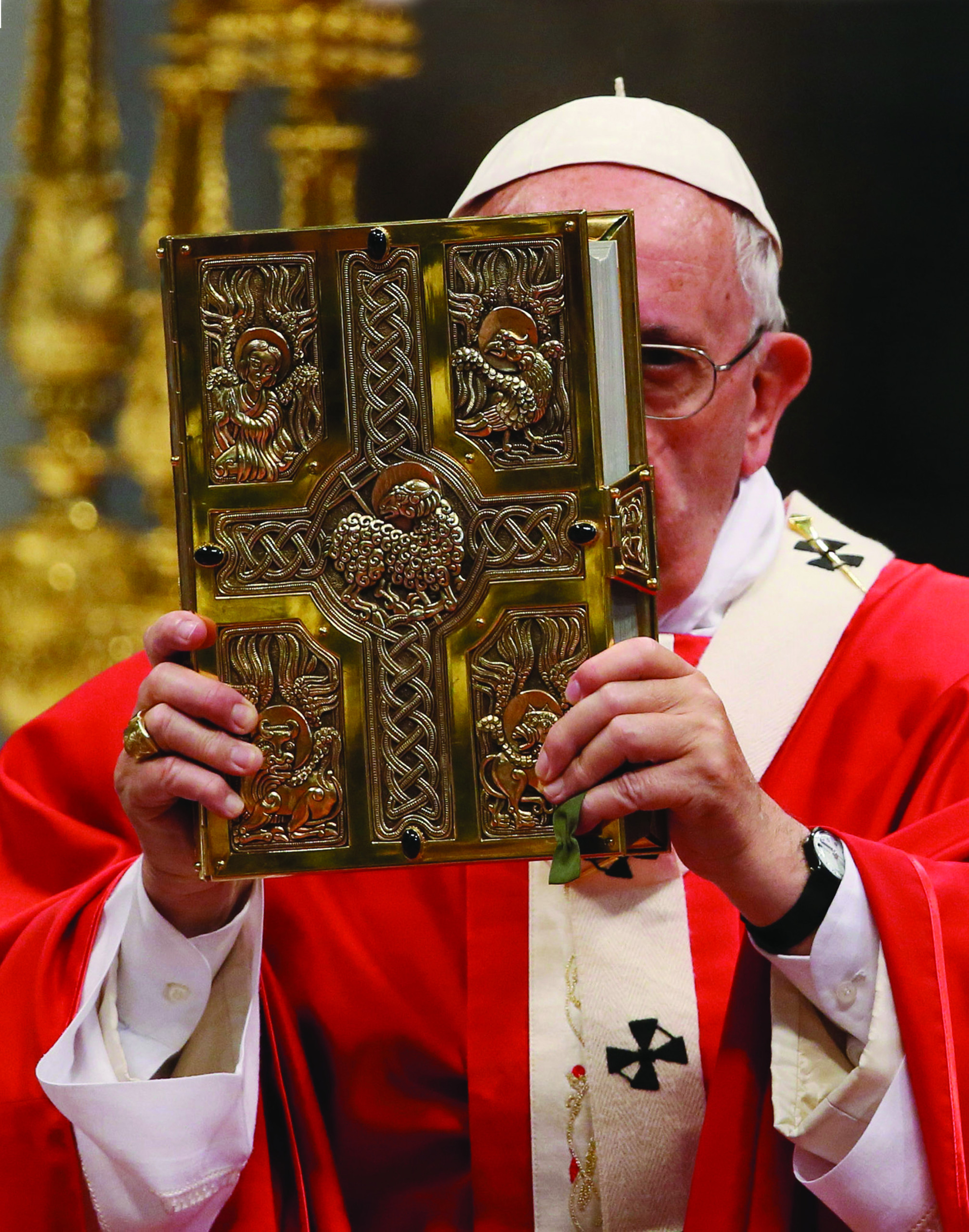Christopher West in At the Heart of the Gospel maintains that, in the wake of the sexual revolution, Pope John Paul II’s message to the Church and world was that “we must learn how to venerate the body as an icon of the divine mystery.” To that end, he asserts that promoting the New Evangelization requires combating iconoclasm, which he says Cardinal Ratzinger called “the summation of all heresies” because it leads us to “deny, devalue, neglect, or otherwise reject human sexuality as an icon of the divine.” These claims are foundational to the larger argument West makes in the book, which is that the New Evangelization, rather than throwing out all that is evil in our pornographic culture, should “overcome evil by ‘filling in the void’ it leaves or by ‘untwisting the good’ that it distorts.”
But did John Paul really call us all to “venerate the body”?
Did the future Pope Benedict XVI really term iconoclasm the summation of all heresies, and did he do so for the same reason as West? If not, does West’s advice that the Church “descend into the culture” still stand as an answer to the evil of pornography? To answer those questions fairly, it is necessary to look at each of West’s assertions in context, along with the sources he cites.
West: Body Reveals “Divine Mystery”
West’s description of what he says is John Paul’s call to “venerate the body” occurs in a section on the need to avoid the extremes of “idolatry” and “iconoclasm” with regard to the body:
How should Christians respond to the secular world’s “cult of the body”—with a de-emphasis on the body and a new emphasis on “the spirit”? If so, one might have expected John Paul II to respond to the sexual revolution by offering the Church and the world an extended “theology of the spirit.” But, instead, he gave us an in-depth theology of the body. Why? Can we not recognize in John Paul II’s Theology of the Body—a gift bequeathed to the Church at the end of the second millennium—that the Successor of Peter was applying the critical lessons bequeathed to the Church at the end of the first millennium in the iconoclastic crisis? To the world he was saying: we mustn’t worship the body. To believers he was saying: we mustn’t reject the body. To both he was saying: we must learn how to venerate the body as an icon of the divine mystery (At the Heart of the Gospel, 184-185).
No source is given for this distillation of John Paul’s message, but West later quotes an address from the late Pope’s Catecheses on Human Love (which West calls the Theology of the Body) that mentions “veneration” of the “divine mystery” in connection with sexuality: “[As] John Paul says, we should be ‘full of veneration for the essential values of conjugal union … of the conjugal act.’ For it ‘bears in itself the sign of the divine mystery of creation and redemption’” (At the Heart of the Gospel, 234). So it appears that West takes his original claim of John Paul’s exhortation to “venerate the body” from that same catechesis.
John Paul’s original words appear in his November 14, 1984 Wednesday audience, in which he comments on what Humanae Vitae shows us with regard to the gift of fear:
The gifts of the Holy Spirit, and especially the gift of respect for what is sacred, seem to have a fundamental significance here. This gift sustains and develops in the married couple a particular sensitivity to everything in their vocation and life that bears the sign of the mystery of creation and redemption: a sensitivity to everything that is a created reflection of God’s wisdom and love. Therefore that gift seems to introduce the man and woman to a specially profound respect for the two inseparable meanings of the conjugal act, which the encyclical speaks of in relation to the Sacrament of Marriage (Humanae Vitae 12). …
Respect for the twofold meaning of the conjugal act in marriage, which results from the gift of respect for God’s creation, is manifested also as a salvific fear. It is a fear of violating or degrading what bears in itself the sign of the divine mystery of creation and redemption. …
If this salvific fear is directly associated with the negative function of continence (that is, to resistance with regard to concupiscence of the flesh), it is also manifested—and to an ever greater degree as this virtue gradually matures—as sensitivity filled with veneration for the essential values of the conjugal union: for the two meanings of the conjugal act (or, to use the terminology of the previous analyses, veneration for the interior truth of the mutual language of the body).
Two things are clear: First, John Paul is not calling his listeners to “venerate the body.” He is speaking of the need for spouses to venerate “the essential values” of marriage and “the interior truth of the mutual language of the body.” It is an interior truth that is encapsulated in “the two meanings of the conjugal act,” the unitive and the procreative (Humanae Vitae 12). Second, with regard to the “divine mystery,” the body is not an icon; neither is the conjugal act. Rather, “the conjugal act in marriage … bears in itself the sign of the divine mystery of creation and redemption”— “bears in itself” not as an icon that is to be the object of one’s gaze, but as a sign in which one participates.
Simply put, there is no way in which a theology of “body as icon” can be derived from John Paul’s words. And this is for a simple reason: an icon cannot be a mere body. A icon’s power lies in its drawing the viewer’s attention to a face.
John Paul II: Face Reveals the Person
Nowhere in At the Heart of the Gospel does West mention the importance of the face for John Paul II—yet it is central to the theology of the late Pope. In his Catecheses on Human Love, every time John Paul speaks of the nuptial meaning of the glorified body in union with God, he always describes this union in the scriptural phrase “face to face” (Ex 33:11, I Cor 13:11). In that phrase, he finds the biblical foundation for his personalistic understanding of communion—an understanding inspired in part by Emmanuel Levinas’s “philosophy of the face” (see John Paul II, Crossing the Threshold of Hope, 210).
For John Paul, the communion of persons is experienced in “intersubjectivity.” By this, he means that each member of a communion of persons—whether it be the Holy Trinity, the communion of saints, or spouses—retains his own individual “I” even as he unites himself to the other person’s “Thou.”
The nuptial, or spousal, meaning of the body, refers to the manner in which the body of the human person points to the person’s destiny of communion with God, who Himself is a communion of persons. Through God, this same nuptial meaning of the body is directed towards entering into communion with all who are in Christ.
John Paul does say that the conjugal act is the earthly sign of the nuptial meaning of the body, because it represents man and woman’s mutual self-gift on every level—the levels of their shared humanity, their created sexuality, and their procreative ability. But he does not say that the way spouses experience this nuptial meaning on earth is the way we will experience it in heaven. For John Paul, our spousal union with God in heaven is not to be envisioned as a union of bodies. It is to be envisioned as a union of persons—and the primary way we experience another person, in heaven and on earth, is not through the “body.” It is through the face. That is why, in his Wednesday audience of March 24, 1982, John Paul II cites the human being who “freely chooses continence for the kingdom of heaven” as the model for “the risen man”: “In him there will be revealed, I would say, the absolute and eternal nuptial meaning of the glorified body in union with God himself through the ‘face to face’ vision of him, and glorified also through the union of a perfect intersubjectivity.”
Ratzinger’s True Spirit
Given, then, that no human body (apart from that of Christ) is, precisely as body, an icon to be venerated, where does that leave West’s claim that the New Evangelization must combat “iconoclasm”? Again, his claim deserves to be read in context:
Much is at stake in the way we choose to respond to our culture’s idolatrous worship of sex. If we lean too far in the other direction, we will eventually fall into a black hole that robs us of everything Christ and his Church offer us. For iconoclasm is ‘the summation of all heresies’ as Cardinal Ratzinger observes. …
… But why the summation of all heresies? Because the antichrist is the one who denies Christ come in the flesh (see 1 Jn 4:2-3), and this is what iconoclasm does: it denies the Incarnation. (At the Heart of the Gospel, 164)
The first thing to note about the quote West adopts on iconoclasm as the “summation of all heresies” is that Ratzinger, in using that phrase in The Spirit of the Liturgy, does not voice it as his own opinion. He is summarizing the doctrine of the Church from the Second Council of Nicea onward. This may seem like a minor point, but it reflects West’s consistent efforts to portray himself not merely as a catechist passing on the traditions of the faith, but as a privileged interpreter of the present Pope.
More importantly, there is a fundamental difference between Ratzinger’s theology of icons and West’s theology of the human body as icon. The human body is literal and historic—it is this person’s mortal body. Ratzinger, by contrast, is writing about icons of Christ—those based on acheiropoieta (miraculous images)—that were not intended to literally look like Christ’s body, or like any body. Literalism, Ratzinger writes, is precisely what an icon does not convey: “In the icon it is not the facial features that count (though icons essentially adhere to the appearance of the acheiropoietos). No, what matters is the new kind of seeing. The icon is supposed to originate from an opening up of the inner senses, from a facilitation of sight that gets beyond the surface of the empirical and perceives Christ, as the later theology of icons puts it, in the light of Tabor” (Spirit of the Liturgy, 121).
West quotes Ratzinger on the “new kind of seeing” several times, but omits the future Pope’s conclusion that this seeing “teaches us to see Christ, not ‘according to the flesh,’ but according to the Spirit (cf. 2 Cor 5:16).” Yet it is just this point that is key to the future Popes’s account of the Church’s teaching that iconoclasm is “the summation of all heresies.” Ratzinger writes:
It is the Holy Spirit who makes us capable of seeing, he whose work is always to move us toward Christ… This seeing, which teaches us to see Christ, not “according to the flesh,” but according to the Spirit (cf. 2 Cor 5:16), grants us also a glimpse of the Father Himself.
Only when we have understood this interior orientation of the icon can we rightly understand why the Second Council of Nicaea and all the following councils concerned with icons regard it as a confession of faith in the Incarnation and iconoclasm as a denial of the Incarnation, as the summation of all heresies. The Incarnation means, in the first place, that the invisible God enters into the visible world, so that we, who are bound to matter, can know Him. In this sense, the way to the Incarnation was already being prepared in all that God said and did in history for man’s salvation. But this descent of God is intended to draw us into a movement of ascent. The Incarnation is aimed at man’s transformation through the Cross and to the new corporeality of the Resurrection. God seeks us where we are, not so that we stay there, but so that we may come to be where He is, so that we may get beyond ourselves. That is why to reduce the visible appearance of Christ to a “historical Jesus,” belonging to the past, misses the point of His visible appearance, misses the point of the Incarnation (Spirit of the Liturgy, 122-123).
In this light, West, in claiming that the body is an icon to be venerated, is not merely confusing the body of a human person with the body of Jesus. By claiming that the human body in its present, mortal form is an icon, he is reducing it to the “historical Jesus,” effectively erasing its eschatological meaning. In other words, he is doing exactly that to which he objects: making the body an idol.
Given West’s apparent interest in The Spirit of the Liturgy, it is strange that At the Heart of the Gospel omits any reference to the part of the Ratzinger book that deals explicitly with the theology of the body. Perhaps it is because the “theology of clothing” posited by Ratzinger differs radically from West’s single-minded focus on the eschatological sign-value of nakedness. Discussing the meaning of priestly vestments in light of the hope that St. Paul describes in 2 Corinthians 5, the future Pope writes:
[St. Paul’s] hope is to be not “unclothed,” but “further clothed,” to receive the “heavenly house”—the definitive body—as a new garment. … Thus the theology of clothing becomes a theology of the body. … The liturgical vestment carries this message in itself. It is a “further clothing,” not an “unclothing,” and the liturgy guides us on the way to this “further clothing,” on the way to the body’s salvation in the risen body of Jesus Christ, which is the new “house not made with hands, eternal in the heavens” (2 Cor 5:1). The Body of Christ, which we receive in the Eucharist, to which we are united in the Eucharist (“one Body with him,” cf. 1 Cor. 6:12-20), saves us from “nakedness,” from the bareness in which we cannot stand before him
(Spirit of the Liturgy, 218).
Our true goal, then, is not to be “naked without shame,” but, rather, to be clothed in grace.
Truth Uprooted
One of John Paul II’s observations in his Catecheses on Human Love was, in essence, that pornography (or “pornovision” as he called it, to distinguish it from obscene writings) does the same thing to the human person that a reductivist understanding of the “historical Jesus” does to Christ. He said that, in the pornographic image, the nuptial meaning of the body is “uprooted.” What should be the image of a person instead “becomes, through social communication, an object and what is more, in a way, an anonymous object” (April 29, 1981).
Eleven years later, as cable TV and home video exacerbated pornography’s poisonous effects on the family, John Paul sharpened his language, declaring unequivocally that pornography is “opposed to the truth about the human person”:
Pornography is immoral and ultimately anti-social precisely because it is opposed to the truth about the human person, made in the image and likeness of God (cf. Gen. 1:26-27). By its very nature, pornography denies the genuine meaning of human sexuality as a God-given gift intended to open individuals to love and to sharing in the creative work of God through responsible procreation. By reducing the body to an instrument for the gratification of the senses, pornography frustrates authentic moral growth and undermines the development of mature and healthy relationships. It leads inexorably to the exploitation of individuals, especially those who are most vulnerable, as is so tragically evident in the case of child pornography (“Address to the Members of the Religious Alliance Against Pornography,” January 30, 1992).
In contrast to the late Pope’s account of pornography as depersonalizing, West’s univocal understanding of body-as-icon leads to the profoundly disturbing inference that the venerable icon of the human body is present even in pornographic depictions. His description of the pornographic culture’s “body-centeredness” as a “cheap substitute” implies that he believes the pornographic image is simply an impoverished version of the human person—an image that should not be destroyed, but should rather be completed by a mystical Christian worldview:
Some warn that talking so insistently about the theology of our bodies places too much emphasis on the body in a culture in which everything is body-centered. I certainly do not claim that I’ve got the balance just right, but when I hear statements like this I find myself thinking—Isn’t Christianity also, in its own way, body-centered? Indeed, the body of Christ is the very center of our worship, the source and summit of our faith. The body-centeredness of the culture is simply a cheap substitute for the body-centeredness we’re all created for and long for. A pornographic culture has fixated itself on the sign (the body in its sexuality and call to union) and failed to see that to which the sign points: the mystical reality of “nuptial union” with the divine consummated in the Eucharist (At the Heart of the Gospel, 163).
Does West really believe that the images on which our pornographic culture is fixated are signs of the body in its sexuality and call to union? And does he really believe that, if users of pornography were to look rightly at these very same images, the images would lead the users to union with Christ? Whether or not he intends such an interpretation, it is uncomfortably easy to see how a pornography user might find in his words an apologia for looking at naked people other than his spouse. Much to the detriment of contemporary Catholic culture, examples of this reading of West are not difficult to find.
Marc Barnes, the 18-year-old author of the popular blog Bad Catholic, who calls At the Heart of the Gospel “awesome,” asserts in a November 2011 blog post titled, “The Best Porn in the World,” that the answer to pornography is to promote images of the Virgin Mary breastfeeding.
“To be clear,” Barnes wrote, “I believe that the cure for the addiction so many have to the illicit viewing naked women is in fact… naked women… The naked woman is made in God’s image, and thus the accurate portrayal of her is always an experience of God. After all, since beauty comes from the Creator, anything beautiful speaks his name.”
Barnes concludes by musing that if a pornography addict looks at artistic images of naked women, such as the Virgin breastfeeding or Botticelli’s Venus, “the words of our late Pope may arise unbidden in the addict’s consciousness, that the problem with pornography is not that it shows too much of the person, but that it shows far too little”.
You can read more here.
In fact, John Paul II never said such a thing. Barnes is borrowing the words of Christopher West (Theology of the Body Explained, revised edition, 2007, 290).
Along similar lines, Father Thomas J. Loya, a Byzantine Catholic priest whom West quotes admiringly in At the Heart of the Gospel, writes, “We must never, ever look at pornography. But since we are immersed in a pornified world and surrounded by various degrees of soft porn our only way out is to fight fire with fire. We have to learn to see through the lens of the theology of the body. In terms of some practical advice I suggest a three-part technique that I call, ‘see—pray—and pass on’” (“More About Pornography and TOB,” CatholicExchange.com, March 31, 2010, no longer online; CatholicExchange.com removed Loya’s columns following reader complaints).
Loya explains elsewhere how to implement this technique: “Alright Look at her!! That’s right, look at her!! Look at her butt, her breasts, but don’t stop there. Look at every aspect of her magnificent femininity! Take her in completely and say, ‘How many are your works, O Lord, in wisdom you have made them all!’ (Psalm 103)” (“Letter to ‘John’—Part 1 of 2,” CatholicExchange.com, February 15, 2010).
When a pastor of the Church is advising a man fighting lust to “completely” take in a woman’s body, we are a long way away from advising penitents to avoid the near occasion of sin.
The Baby in the Bathwater
In At the Heart of the Gospel, West recommends a similarly novel approach to spiritual combat. “Philosophically speaking, evil does not ‘exist,’” he notes. Arguing that every evil contains a good, he advises “suffering evil” rather than “wagging fingers at it”:
Since human nature is not totally corrupted (see CCC 405), neither is culture at large. Evil is not creative. It can only take what God has made—all of which is good—and twist it, distort it, or deprive it of its fullness… Philosophically speaking, evil does not “exist”… As we let the fundamental truth about good and evil sink in more and more deeply, it changes our whole approach to evil. We overcome it not by categorically “throwing it out.” Why not? Because there is always a baby in that bathwater (At the Heart of the Gospel, 186).
Already, before West has even finished his thought, he is deeply in conflict with John Paul II’s encyclical Veritatis Splendor, with its magisterial exposition on the Church’s historical teaching regarding “acts which, in the Church’s moral tradition, have been termed ‘intrinsically evil’ (intrinsece malum).” Such acts, John Paul writes, are evil “always and per se, in other words, on account of their very object, and quite apart from the ulterior intentions of the one acting and the circumstances.” Quoting Gaudium et Spes 27, he adds that intrinsically evil acts include “whatever violates the integrity of the human person” (Veritatis Splendor 80).
There is, then, no “baby in that bathwater” as far as intrinsic evils are concerned. West, however, ignores this, as he continues:
We overcome evil with good, as Scripture says (see Romans 12:21). That is, we overcome evil by “filling in the void” it leaves or by “untwisting the good” that it distorts… As we learn to rest in this truth, we are no longer rankled by evil. We see it for what it is, and we are “at ease” with ourselves and the world — not because we have turned a blind eye to evil, but because we are confident in the divine plan to overcome evil with good. We can maintain an interior peace even in the face of great evil because we know how to “let God be God” in dealing with evil, and we know how to participate effectively in his redemptive plan. We ultimately conquer evil not by wagging fingers at it, but by “suffering it” in union with Christ. That is, we conquer evil by mercy (At the Heart of the Gospel, 186).
A generous reading of West’s claim that evil is to be suffered rather than thrown out is that he would never intend his words to be used to support pornography. However, he uses those very same words in a January 2012 online audio interview promoting At the Heart of the Gospel—and this time there is no question about what he means:
[We] need to be discerning, we need to recognize that all sin is, is a twisting of something good. … All the devil can do is take what God created, all of which is very good, and twist it, distort it, and mock it. And in the New Evangelization, we have to be willing to look for the good that is present even behind what is evil. …
The way we overcome evil is not just by taking that evil and throwing it out the window, so to speak. Why? Because there’s always a baby in that bathwater. There’s always something good behind the evil that we have to reclaim, that we have to take back. On this topic, we could look at pornography, for example. Pornography is a great evil. It is destroying marriages, it is destroying families, it is wreaking havoc in our culture. And yet, we must not overreact. There is something good behind it. What is good behind it? The human body in its nakedness. Behold, it is very good! (“IP#135 Christopher West—The Heart of the Gospel on Inside the Pages,” www.discerninghearts.com/?p=6873)
It appears that Marc Barnes and Father Thomas J. Loya, far from misinterpreting West, are in fact his star pupils. If West’s novel approach to moral theology becomes the norm, parishes, Catholic colleges, and RCIA classes worldwide can expect to see much more of what Barnes so artfully calls “The Best Porn in the World.”






Facebook Comments